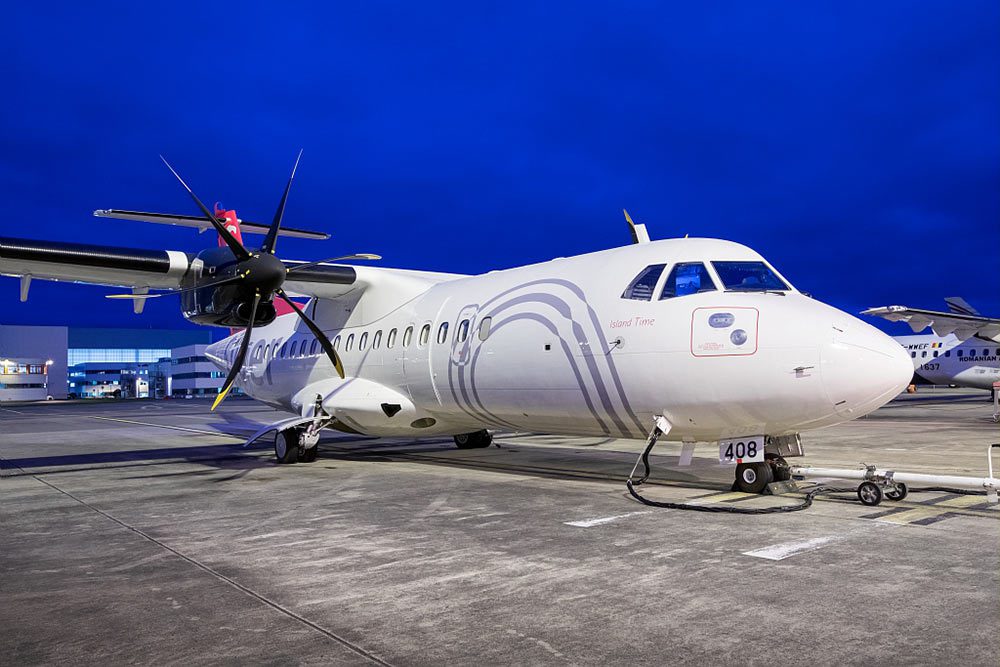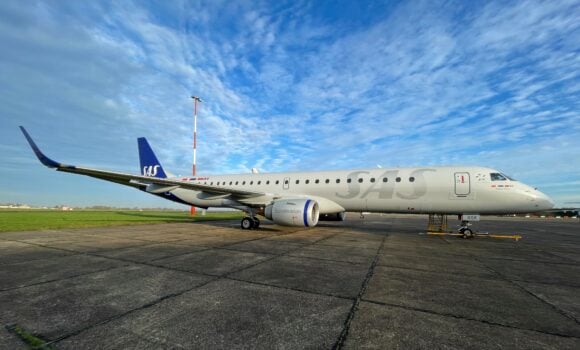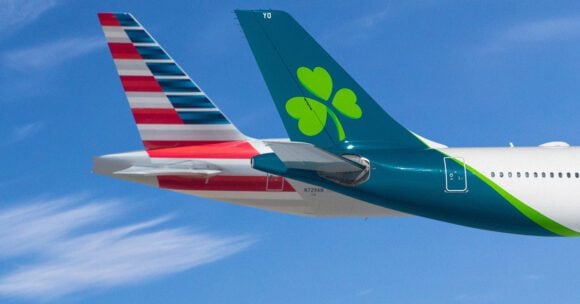
truenoord atr42 600 silver airways
Here is our rolling report with short aviation news for the month of January 2022:
31 – Lessor TrueNoord has raised $250 million in new funding that it plans to use for building its fleet of regional aircraft. The funding has been arranged with support from Citibank, Societe Generale Corporate and Investment Banking, and Farallon Capital Management. The lessor is seeing continued demand for regional aircraft, which have had a key role in keeping networks alive during the pandemic. The facility was originally raised in 2019 but has been extended. TrueNoord has a fleet of 56 aircraft, including ATR’s, Embraer’s, Airbus, and De Havilland Canada. It recently lease two ATR 42-600s to Silver Airways.
31 – easyjet is recruiting 1.000 new pilots and has reopened its pilot training program for the first time in two years. It intends to bring the 1.000 new pilots in over the next five years to support growth opportunities. The airline has launched a European-wide ad campaign to attract its new staff and encourages girls and women to take the pilot seat.
28 – AirAsia Group reported the highest load factors and capacity since the start of the pandemic. In the fourth quarter of 2021, the average load factor was eighty percent or 74 percent for the full year. Passengers carried were up by 103 percent to 2.7 million in Q4 and 4.8 million for the full year. The airline group benefited from quarantine-free travel bubbles to Malaysia and a reduction in restrictions. Further recovery is expected since Malaysia introduced a Vaccinated Travel Lane between Malaysia and Singapore on January 24 and Thailand resumes quarantine-free travel schemes from February 1. AirAsia Malaysia saw an increase in the number of passengers carried by 164 percent to 2.2 million in Q4 and 3.1 million for the full year. AirAsia Philippines reported a 201 percent surge in passengers carried in Q4, but only to 354.886 or 875.927 for the full year. AirAsia Thailand was down by 59 percent to 1.1 million in Q4 and -69 percent to 2.9 million in 2021. AirAsia Indonesia also saw lower numbers: -57 percent to 158.092 in Q4 and -63 percent to 801.673 for the full year.
AirAsia Group has rebranded its name to Capital A to better reflect the group’s core businesses that are more than just the airlines, like Teleport, BigPay, and Ventures. The airlines will keep their names.
27 – China Airlines has placed an order with Boeing for four 777Fs. They are complementary to the three aircraft it ordered in 2019. The Taiwanese carrier says that it wants additional full freighters “to capture new market opportunities.” The airline’s cargo unit reported $3.6 billion in revenues in 2021, generated by the fleet of three other 777Fs and eighteen 747-400Fs.
26 – Norwegian is to reopen its base at Stockholm Arlanda from this summer and has started recruitment of 270 new cabin crew. It plans to operate 54 routes out of the Swedish capital, up from fifteen routes that are currently offered from Arlanda. The reopening confirms the carrier’s expansion after two years of restructuring. It also means that another airline is using opportunities to open a base in SAS’ hometown, after Ryanair, Finnair, and Eurowings (from March) have also high hopes of their Stockholm operations.
21 – Spanish low-cost carrier Vueling will expand its activities at London Gatwick. This summer, it will base two aircraft at London’s second airport and offer fine new routes to Spain, bringing the total to twelve. New in the network are Malaga, Menorca, La Coruna, Sevilla, and Granada. The carrier will also increase frequencies on its existing routes to Barcelona, Rome, Bilbao, Florence, Valencia, Santiago de Compostela, and Paris. The expansion is interesting, as the subsidiary of International Airlines Group (IAG) will likely compete with British Airways’ new Gatwick airline.
21 – Qantas and Jetstar plan to reduce their domestic capacity by some ten percent from February 5 to March 31. This follows the decision of the state of Western Australia to delay the opening of borders, now that the country is suffering from increasing Omicron infection rates. The airlines announced earlier this month that they would adjust capacity to around seventy percent. The new reductions lower this to sixty percent for the airline’s third quarter. The delay of Western Australia is also affecting the relaunch of direct services between Perth and London Heathrow. Qantas is having this under review. The carrier asked the Fair Work Commission to terminate the long-haul cabin crew agreement, as it makes effective rostering of staff impossible. “Asking to terminate the current agreement is the last thing we want, but we’re stuck between a rock and a hard place”, said Andrew David, CEO of Qantas International.
20 – Record-high sickness leave and quarantine restrictions are also impacting KLM The stabilize the situation and ease the pressure on cabin crew rosters, KLM has decided to reduce its flight schedule from February 7 until March 13. This will result in flight cancelations.
19 – Breeze Airways will start operations with its Airbus A220s on May 4. The airline has taken delivery of its first of eighty A220s in December, but this number will grow over the year. The initial services will be from Tampa (Florida), Charleston (South Carolina), Hartford (Connecticut), and Norfolk (Virginia), connecting to Akron, Charleston, Louisville, Oklahoma City, Richmond, Tulsa, Bentonville, and Huntsville.
18 – Japanese airlines ANA and its subsidiary Peach will further integrate their network and operations during FY22. The two carriers say that they will jointly develop the flight schedule, which according to ANA will “offer the best mix of ANA and Peach services depending on route and flight schedule.” ANA and Peach plan to restore capacity on the domestic network to the level of early 2020, so just before the outbreak of the pandemic. If necessary, ANA can deploy widebody aircraft on the domestic network to increase flexibility. On international services, the two airlines strive to maximize revenues by capturing connecting demand between Asia and North America and by optimizing cargo flights with passenger aircraft. ANA will also deploy its eleven full freighters for maximum profitability.
18 – Airlines have improved their operating losses in the third quarter of 2021, reports IATA. In its financial monitor, it remarks that after consulting 87 airlines, the operating loss for Q3 has improved to 2.6 percent of revenues compared to 13.6 percent in Q2. North America produced a $2.9 billion profit, but Europe just $31 million. Asia-Pacific remains loss-making at $-3.2 billion, Latin America at $-1.9 billion, and other regions at $-31 million. Although some airlines report strong bookings for premium classes, IATA notes that premium is still trailing Economy Class. Q4 results will be presented later this spring but will be impacted by rising fuel costs and the effects of Omicron on demand.
18 – Airbus and Tarmac Aerosave plan to open an aircraft lifecycle center in Chengdu (China) for parking, storage, maintenance, and dismantling of various aircraft types. The two companies and the city of Chengdu have signed a Memorandum of Understanding. The plan is to open the new facility in 2023, which will offer space for the storage of 125 aircraft. Tarmac has vast experience with storing and recycling, notably at its site in Tarbes (France). The Chinese aircraft market is expected to see exponential growth in the coming twenty years as older-generation airliners are retired.
17 – AerCap, the world’s biggest lessor after completing the $24 billion purchase of GECAS in November, completed 311 leasing agreements in 2021, it says in a business update. Just over half of them or 158 were finalized in the fourth quarter and include 92 narrowbodies, nineteen widebodies, 27 engines, and twenty helicopters. AerCap completed the purchase of 29 aircraft, including sixteen Airbus A320neo-family, five Boeing MAX, and a single A220. It sold 23 older-generation aircraft from its owned and managed portfolio. The lessor will announce its financial results at a later date.
14 – Scandinavian airline SAS has sourced six Embraer E195s from aircraft asset management company Falko. The first aircraft, previously with Flybe, has been painted in the SAS livery. The Embraers will join the airline’s new platform SAS Link, which plans to start operations out of Copenhagen (Denmark) somewhere in the coming months. Link will fly regional routes, with staff that is recruited under cheaper contracts. Another platform, SAS Connect, will use the same ‘low-cost’ model for its operations on short to medium-haul services. CEO Anko van der Werff said in November that customers will not be able to see the difference between the platforms and are offered the same service.
14 – Norwegian start-up Norse Atlantic has been granted permission by the US Department of Transportation to launch services to the US. The airline has plans for services to New York, Fort Lauderdale, and Los Angeles but has been timing its launch until the worst of the Covid-crisis is over. It originally hoped to start in late 2021 but delayed this until coming spring at the earliest. Norse received its Norwegian Airline Operator Certificate in late December but is waiting for that of the UK’s CAA. Its has delivery from lessors of its two Boeing 787-9s.
13 – Qantas and Jetstar have adjusted capacity for the current January-March quarter, which is Q3 in the airline’s FY22. In response to the effects of the Omicron variant on air travel and staff availability, domestic capacity will be reduced from 102 to 70 percent. International capacity will be down from 30 to 20 percent as Qantas and Jetstar are confronted with travel restrictions to Japan, Thailand, and Indonesia. The two airlines say they have stood 100 percent of their Australia-based staff to compensate for any shortages that may follow from quarantine measures.
12 – Passenger travel continued to increase in November, according to the latest figures from IATA. That was just before the effects of the Omicron have become apparent by the end of the month and early December. November traffic in revenue passenger kilometers climbed to 53 percent, or 47 percent down on 2019. This compares to -48.9 percent in October. At -18.8 percent to 2019 levels, North America was the strongest market, followed by Latin America at -27.5 percent. Europe was at -39.4 percent, the Middle East at -52.6 percent, Africa at -55.1 percent. The Asia Pacific is still a far way off the rest of the world, at -69.8 percent.
The best performing domestic market is still Russia, 17.5 percent better than 2019. The US was at -6.0 percent, Brazil at 8.5 percent, and India at -17.1 percent. Cargo suffered from supply issues and recorded just 3.7 percent growth in November compared to 9.2 in October.
11 – American Airlines and Aer Lingus have launched a codeshare agreement to increase connectivity. The AA code will be placed on flights of the Irish carrier between London Heathrow and Dublin, Cork, Shannon, and Belfast City. Also covered are flights between Dublin to London Gatwick, Birmingham, Manchester, and Amsterdam. Aer Lingus will codeshare on flights from Chicago to Albuquerque, Nashville, Tennessee, Dallas-Forth Worth, Los Angeles, Seattle, San Jose, San Francisco, and Tucson.
11 – Qatar Airways will launch services to two new destinations in Nigeria. Starting on March 2, the airline will operate four weekly flights to Kano via Abuja and three weekly flights to Port Harcourt via Abuja from March 3. The capital Abuja will be served daily instead of four times a week as happens now. Qatar also flies to Lagos. The airline says it sees enormous growth potential in Nigeria, one of the fastest-growing countries on the continent. The two new destinations will bring Qatar’s total gateways to Africa to eight. The airline will use the Boeing 787-8.
10 – KLM has started adding 0.5 percent sustainable aviation fuels (SAFs) on all flights out of Amsterdam. This represents an increase of 0.4 percent over the previous admixture and also applies to all flights of its leisure subsidiary Transavia. KLM has the intention to further grow the uptake of SAFs until 2025 when a two percent blend is made compulsory by the European Union. The purchase of SAF will be financed by raising ticket prices by one to twelve euros, depending on the distance flown and class used. Passengers who wish to do so can pay extra for the purchase of more SAF, although this doesn’t automatically mean that the fuel will be used on the flight they are traveling on.
KLM will source the SAF from SkyNRG and Neste, which are both expanding refinery capacity in The Netherlands. Neste says that it can produce enough SAF to satisfy five percent of SAF demand at Amsterdam Schiphol, although the fuels made from cooking oil and other feedstock is distributed to other customers as well.
Views: 3







